
By Tom Adkinson
Oct 3, 2025
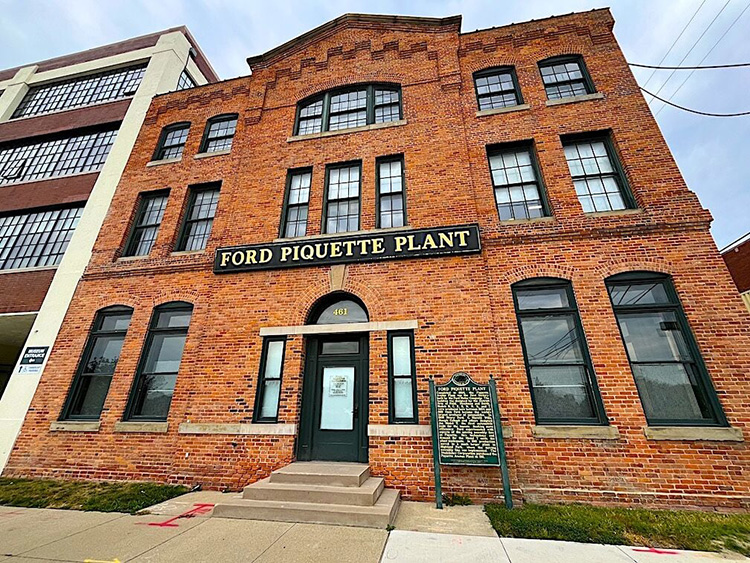 |
|---|
| The Ford Piquette Avenue Plant, saved from demolition in 1998, is called one of the most important sites in automotive history. Image by Tom Adkinson |
DETROIT – Henry Ford was a failure starting automobile companies... the first two times. The third time was a charm, and much of the story of how Ford Motor Company evolved is contained in one Detroit building that predates Ford’s famous moving assembly line.
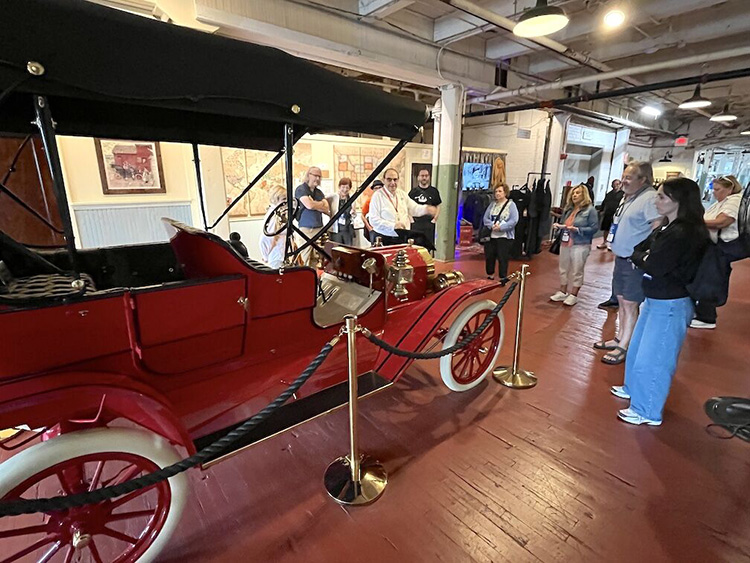 |
|---|
| The gleaming red 1909 Model T touring car tells part of the progressive story of the early evolution of Ford cars. Image by Tom Adkinson |
That structure is the three-level Ford Piquette Avenue Plant, located almost at the interchange of I-75 and I-94, a highway reality that wouldn’t have been built had Ford and other early automotive innovators not pulled society out of the horse and buggy days. The Ford Piquette Avenue Plant was saved from demolition in 1998 and today is open as a museum that will entertain you, even if your first thought is that a collection of old cars couldn’t be all that interesting.
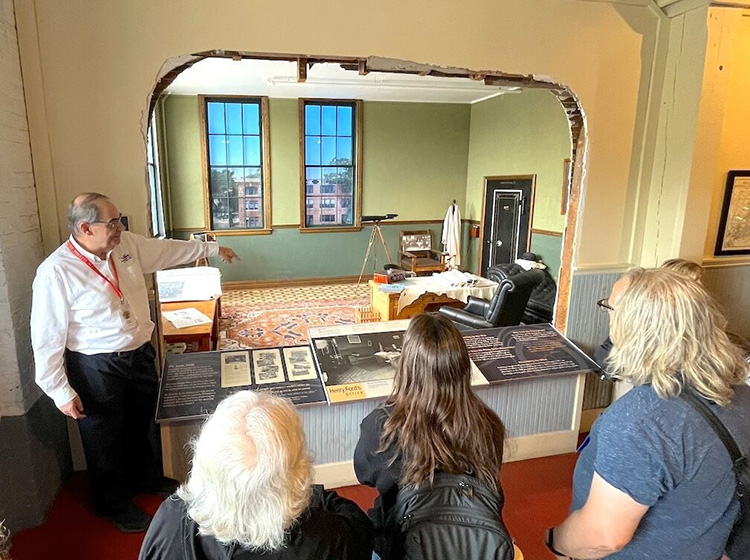 |
|---|
| A tour guide points through a removed wall that exposes the office that Henry Ford used in the Piquette Avenue building. Image by Tom Adkinson |
While the museum’s old cars are the attraction, the dramatic changes those cars – and others – brought to America and the world are the underlying story, that and some of the gee-whiz trivia woven into the building.
“The Ford Piquette Avenue Plant, birthplace of the famous Ford Model T, could easily be the most significant automotive heritage site in the world. Because of its simple design, constantly improving manufacturing efficiency, and price reductions throughout most of its production run, the Model T became a ubiquitous fixture in the early 20th century. It also started a process of fundamental change in the economic and social structure of the entire world,” said David Traver Adolphus in an article for Hemmings.com.
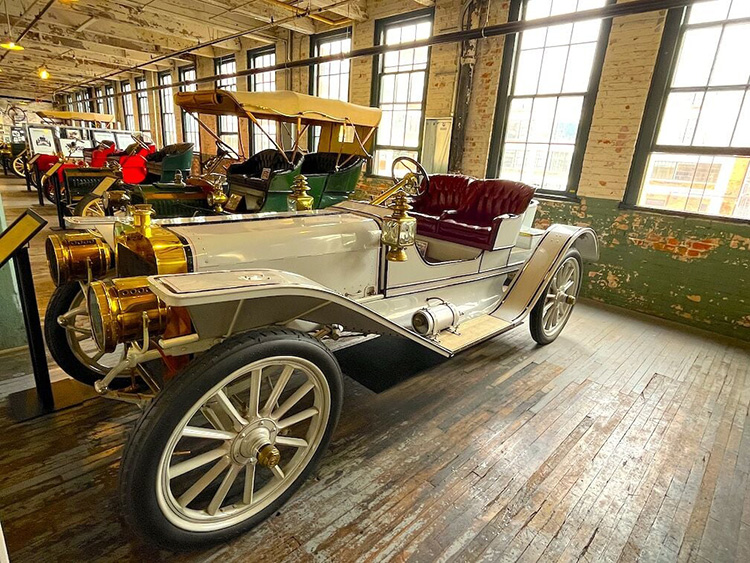 |
|---|
| The Model K, a luxury vehicle, triggered Henry Ford to buy out a major stockholder and shift to the affordable Model T. Image by Tom Adkinson |
Anyone who has taken an American history course links Henry Ford’s success to the moving assembly line for the Model T, but Ford’s third motor company was doing well before that assembly innovation, and it had a string of progressively better and different models before the Model T. Of note: Not all of them were black.
The building on Piquette was the incubator. Construction took less than a year in 1904. It mimicked the style of New England textile mills and is more than a third longer than a football field (402 feet). Thoughtful design included 355 double-hung windows for ventilation and natural light, three firewalls featuring steel doors with heat-triggered sensors so they would slam shut if needed, and an automatic sprinkler system.
Ford already had had success with the Model A, and an alphabet soup of models emerged from the building on Piquette. The initial newcomers were B, C, and F.
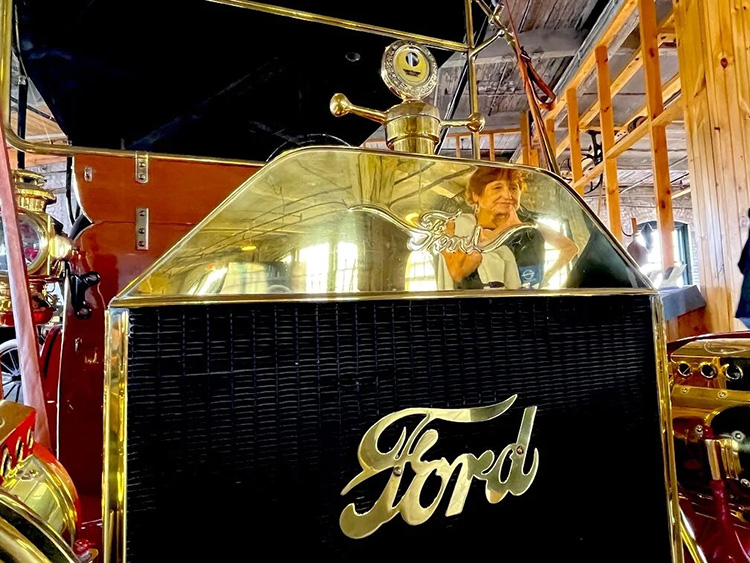 |
|---|
| Radiator coverings and company logos are polished to a reflective gleam throughout the Piquette Avenue Plant. Image by Tom Adkinson |
Tour guides explain the expansion through the alphabet, and note that the Model K played a big role in the company’s future. A major shareholder championed the Model K, a big and expensive vehicle, while Henry Ford favored a simpler, more affordable model. He envisioned success with volume, so he bought out the Model K’s advocate and, in September 1907, produced the first Model T.
“We have the only set of alphabet models all on display. The Henry Ford Museum has a set, but it doesn’t show them all at once,” my tour guide explained.
Model T production reached 200 cars per month, and 12,000 Model T Fords came out of this building before work shifted to another facility in 1910. That’s where the assembly line moved.
Ford sold the Piquette Avenue building to Studebaker, which made cars there from 1911-1933. Enough happened here that the building, saved by the Model T Automotive Heritage Complex non-profit, is on the National Register of Historic Places and is a National Historic Landmark.
“This is a real place, where real things happened. It’s not Disneyland,” my tour guide declared.
Trip-planning resources: FordPiquettePlant.org and VisitDetroit.com
(Travel writer Tom Adkinson’s book, 100 Things To Do in Nashville Before You Die, is available at Amazon.com.)
